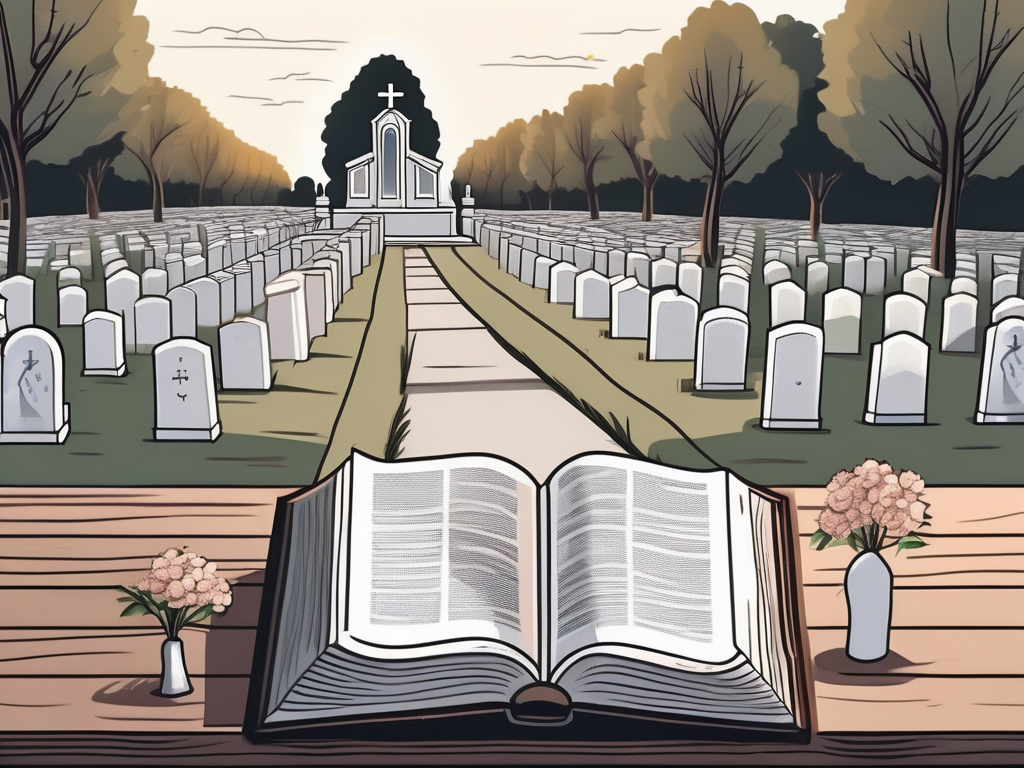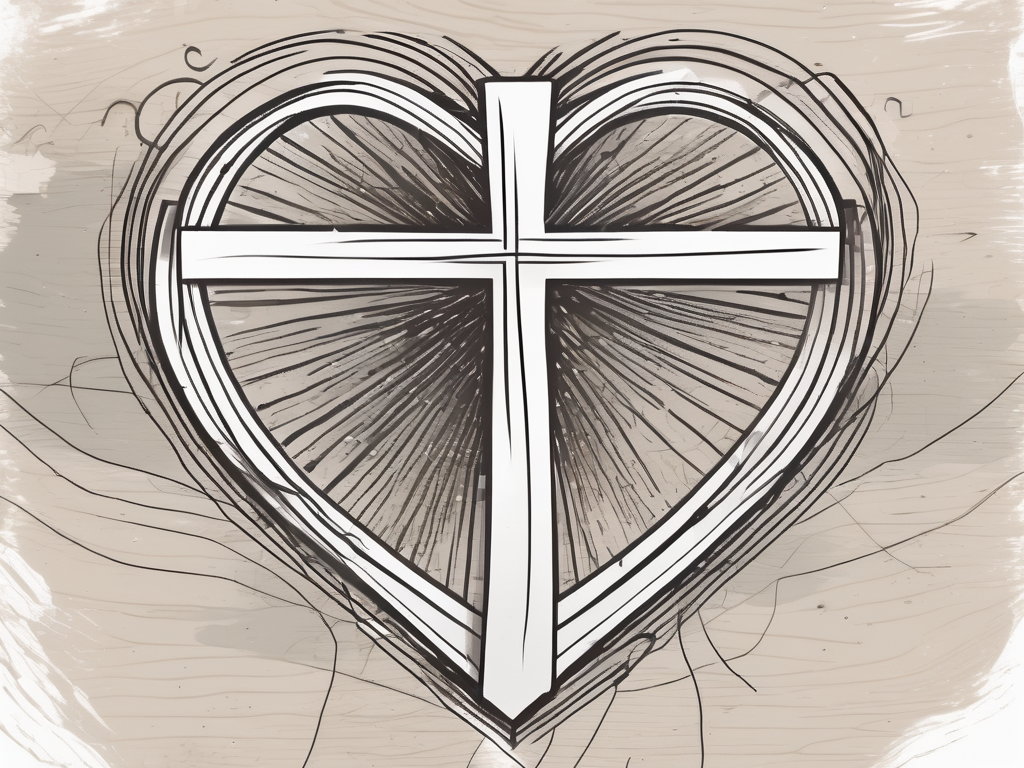Visiting graves is a topic that evokes various emotions and beliefs in different people. Some find solace and comfort in visiting the final resting place of loved ones, while others may see it as a futile act. In this article, we will explore what the Bible has to say about visiting graves and the theological interpretations surrounding this practice.
Understanding the Concept of Death in the Bible
The Bible presents a multifaceted view of death, reflecting the diverse perspectives held by different authors within its pages. In the Old Testament, death is often portrayed as a natural and inevitable part of life, highlighting the brevity of human existence. Conversely, the New Testament introduces the concept of resurrection and eternal life through Christ, offering hope beyond the grave.
Old Testament Perspectives on Death
In the Old Testament, death is often depicted as a transition from the earthly realm to Sheol, a shadowy place of the dead. While there are no explicit teachings regarding grave visitation, some scholars argue that the Israelites held a deep reverence for the ancestors buried in family tombs. This reverence was rooted in the belief that the spirits of the deceased continued to exist in some form.
One instance that sheds light on the topic is the story of Jacob, who requested to be buried in the cave of Machpelah alongside his ancestors (Genesis 49:29-33). This indicates the importance of familial ties and the recognition of the significance of burial sites in Old Testament culture.
Furthermore, the book of Ecclesiastes delves into the philosophical contemplation of death, exploring the vanity of life and the inevitability of death. The author, often attributed to King Solomon, ponders the meaning of life in the face of death, highlighting the fleeting nature of human existence.
Moreover, the book of Job grapples with the question of suffering and death, as the protagonist endures immense loss and hardship. Through Job’s journey, the reader is confronted with the complexities of death and the search for meaning in the midst of pain.
New Testament Perspectives on Death
The New Testament, with its emphasis on the resurrection of Jesus Christ, offers a renewed perspective on death. The apostle Paul, in his letters, emphasizes the hope of believers in being raised with Christ and attaining eternal life. This spiritual resurrection shifts the focus from physical graves to the spiritual realm.
It is important to note that the New Testament does not specifically address the act of visiting physical graves. However, the teachings of the apostles encourage believers to focus on the eternal significance of faith in Christ, rather than dwelling on earthly matters.
Additionally, the book of Revelation provides vivid imagery of the final judgment and the defeat of death. The apocalyptic language used in this book serves to convey the ultimate triumph of God over death and the establishment of a new heaven and earth.
Furthermore, the Gospels recount the death and resurrection of Jesus, highlighting the sacrificial nature of his death and the hope it brings to humanity. The crucifixion and subsequent resurrection of Jesus are seen as pivotal events in human history, offering redemption and the promise of eternal life.
In conclusion, the concept of death in the Bible is multifaceted, encompassing various perspectives and themes. From the Old Testament’s portrayal of death as a transition to Sheol and the importance of burial sites, to the New Testament’s emphasis on resurrection and eternal life through Christ, the Bible provides a rich tapestry of insights into the nature of death and its significance in the human experience.
Biblical References to Grave Visitation
While the Bible does not directly address grave visitation as a religious practice, it contains instances where individuals visit graves or engage with the dead. These accounts offer insights into the attitudes and behaviors surrounding this topic.
Instances in the Old Testament
In some instances, individuals visited gravesites to honor and remember the deceased. For example, King David visited the tomb of Abner, one of his enemies turned ally, to mourn his death and express respect (2 Samuel 3:32-34). This act served as a symbolic gesture to honor the role Abner played in the kingdom.
Furthermore, the Old Testament provides us with another example of grave visitation in the story of Rachel’s tomb. Located near Bethlehem, this tomb became a place of pilgrimage and remembrance for the Jewish people (Genesis 35:19-20). The visitation of Rachel’s tomb symbolized the deep connection and reverence the people had for their ancestors.
Additionally, the story of Samuel’s spirit being summoned by the medium of Endor (1 Samuel 28:7-20) highlights the belief in communication with the dead. Although this practice is frowned upon in the Bible, it demonstrates the existence of such customs during ancient times. The encounter between Saul and the spirit of Samuel provides a glimpse into the complex relationship between the living and the dead, as well as the desire for guidance and reassurance from those who have passed on.
Instances in the New Testament
In the New Testament, the story of Jesus visiting the tomb of Lazarus stands out as a significant reference to grave visitation (John 11:38-44). While Jesus’ purpose was not to engage with the dead, his visitation demonstrated empathy, compassion, and the power of resurrection. This account showcases Jesus’ deep love for his friend Lazarus and his ability to bring him back to life, showcasing his divine nature.
It is crucial to understand that this example illustrates Jesus’ divinity and his unique ability to bring the dead back to life. It does not serve as an endorsement of routine grave visitation for believers. However, it does provide comfort and hope for those who have lost loved ones, reminding them of the ultimate power and victory over death that Jesus possesses.
Furthermore, the New Testament mentions the practice of anointing the dead with spices and ointments, as seen in the story of Jesus’ burial (John 19:39-40). This act of visiting the tomb and anointing the body was a cultural and religious tradition that signified respect and honor for the deceased.
In conclusion, while the Bible does not explicitly promote or discourage grave visitation as a religious practice, it does contain instances where individuals visit graves or engage with the dead. These accounts provide valuable insights into the cultural and religious customs surrounding death and remembrance in biblical times. Whether it is to honor the deceased, seek guidance, or find comfort, grave visitation has played a role in human history and continues to hold significance for many individuals today.
Theological Interpretations of Visiting Graves
Christian denominations and scholars hold varying views on the spiritual significance of visiting graves. These interpretations are derived from theological perspectives and traditions within different faith communities.
Visiting graves has long been a practice within Christianity, with different denominations approaching it in their own unique ways. For some, visiting graves is seen as an act of remembrance and a way to connect with the memory of their departed loved ones. These visits often involve prayers, placing flowers, or seeking solace in the physical presence of the deceased.
Within these denominations, grave visitation is seen as a way to honor the lives of those who have passed away and to maintain a connection with them. It is a tangible way to express love and respect, as well as to find comfort in the familiar surroundings of a cemetery.
On the other hand, there are denominations that discourage frequent grave visitation, emphasizing that true communion with the departed should be focused on their spiritual presence rather than physical locations. These denominations believe that the deceased are in the presence of God and that their spirits are not confined to their earthly remains.
From a scholarly perspective, grave visitation is often perceived as a cultural or personal practice rather than a religious obligation. Some scholars argue that the act can be a source of comfort and closure for mourners, providing a tangible way to honor the memory of the deceased. It allows individuals to physically engage with their grief and find solace in the physical space where their loved ones are laid to rest.
However, it is important to balance personal traditions with biblical principles to avoid placing undue importance on external rituals or losing sight of the spiritual realities of life after death. While visiting graves can be a meaningful and comforting practice, it is essential to remember that the true essence of our connection with the departed lies in our spiritual relationship with them and our faith in the eternal life promised by God.
Ultimately, the theological interpretations of visiting graves vary among Christian denominations and scholars. Whether seen as an act of remembrance, a way to find solace, or a cultural practice, the significance of visiting graves ultimately lies in the individual’s personal beliefs and their understanding of the spiritual realm.
The Role of Prayer and Remembrance
Prayer and remembrance play integral roles in the discussion surrounding grave visitation. The Bible offers insights into how these aspects are addressed within the context of Christian faith.
When it comes to the topic of prayer for the dead, the Bible encourages believers to pray for one another (James 5:16). While there is no specific mention of prayers for the dead, some Christians find solace in offering prayers for the souls of their departed loved ones.
Prayers for the dead can be seen as an expression of love, a request for God’s mercy, and a way to entrust their souls to God’s care. It is important to note that this practice is subjective and not universally accepted among all Christian denominations.
Delving deeper into the subject, we find that various interpretations exist within different branches of Christianity. For example, the Catholic Church has a long-standing tradition of praying for the dead, believing in the concept of purgatory, where souls undergo purification before entering heaven. On the other hand, Protestant denominations tend to focus more on the assurance of salvation through faith in Jesus Christ, and therefore may not emphasize prayers for the dead as prominently.
Nevertheless, regardless of the specific beliefs held by different Christian groups, the act of prayer for the dead reflects the deep love and concern that individuals have for their departed loved ones. It is a way to remain connected with them in spirit and to seek God’s grace and mercy on their behalf.
The Importance of Remembrance in Christianity
Christianity places great emphasis on remembrance, particularly in the context of the Lord’s Supper or Holy Communion. This remembrance serves as a means of proclaiming Christ’s death, resurrection, and the hope of his imminent return.
Similarly, remembering the deceased can be a valuable part of the grieving process for individuals. It allows them to reflect on the impact of their loved ones’ lives and the legacy they leave behind.
When we remember those who have passed away, we honor their memory and acknowledge the significance of their existence. It is a way to keep their spirit alive within us and to continue to learn from the lessons they taught us during their time on earth.
Furthermore, remembrance can also serve as a source of comfort and healing. By reflecting on the lives of our departed loved ones, we can find solace in the cherished memories we shared with them. It can be a time of gratitude for the moments of joy and love they brought into our lives, even as we mourn their loss.
In some Christian traditions, such as All Saints’ Day or All Souls’ Day, there are specific occasions set aside to remember and honor the departed. These observances provide an opportunity for individuals to come together as a community and collectively remember those who have gone before them.
Ultimately, prayer and remembrance are deeply personal and meaningful practices for many individuals. They offer a way to connect with the spiritual realm, seek comfort in times of grief, and honor the lives of those who have passed away. Whether through prayer or reflection, these acts provide a sense of continuity and connection between the living and the departed.
Applying Biblical Teachings to Modern Practices
In our modern world, the practice of visiting graves is deeply intertwined with personal and cultural traditions. As Christians, it is essential to discern how these practices align with biblical teachings and principles.
Balancing Tradition and Scripture
While traditions surrounding grave visitation can provide comfort and a sense of connection, they should not supersede biblical truths or hinder spiritual growth. It is important to maintain a balanced approach, ensuring that our faith is firmly grounded in the teachings of the Bible.
Remembering the deceased and honoring their memory can be constructive if it does not become an elevated form of worship or a substitute for a vibrant relationship with God.
Personal Reflection and Spiritual Growth
Ultimately, the act of visiting graves can serve as an opportunity for personal reflection and spiritual growth. It reminds us of the brevity of life and the importance of making our days count. It can also inspire us to consider our own mortality, encouraging us to examine our faith and strive for a deeper relationship with God.
Whether or not to visit graves is a personal decision influenced by individual beliefs, cultural practices, and personal convictions. Regardless of our stance, it is essential to approach this topic with grace, sensitivity, and a genuine desire to seek God’s wisdom and guidance in all matters pertaining to life and death.












